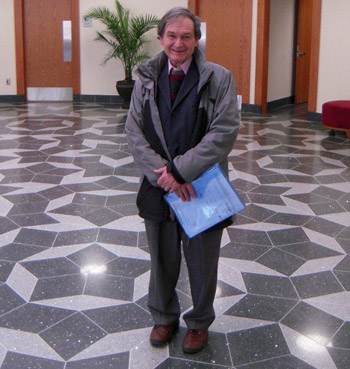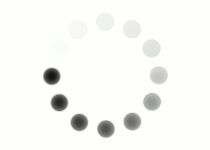Chris wondered what other tessellations might have been hiding under his nose that he just hadn't noticed before. One thing he wasn't sure about was exactly what made a pattern qualify as a tessellation. In other words, what were the properties of tessellations?
Ms. Glenn was able to clear up Chris's confusion. She showed Chris a photo of Roger Penrose, a mathematical physicist who discovered what is now known as Penrose tiling, a tessellation with special properties.

Ms. Glenn asked Chris to focus on the floor where Professor Penrose was standing, which was itself an example of Penrose tiling. She pointed out that all of the "tiles" in the pattern could be categorized into groups of congruent shapes. What two sets of shapes are in the tessellation under Penrose's feet?
There are two sets of congruent rhombuses: one set is dark grey, and the other is light grey. All of the dark grey rhombuses are congruent to each other, and all of the light grey rhombuses are congruent to each other.
Ms. Glenn asked Chris what other things he had found to be true about the tessellations he had seen--as well as the one under Dr. Penrose's feet. See if you can identify the other properties.
| Use the dart to pop any balloons that are NOT properties of tessellations. |
an equal distance apart.
the sides.
no gaps.
Complete
